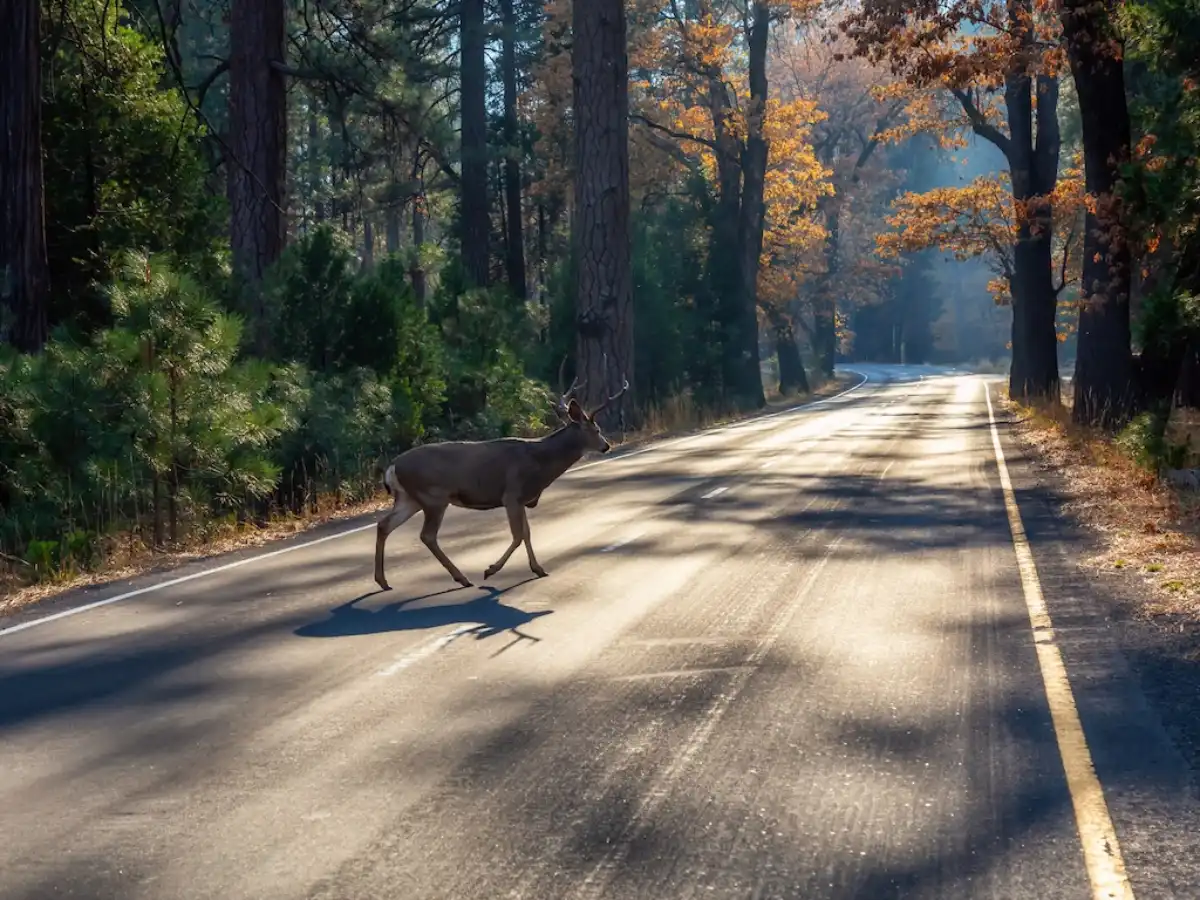Deer collisions can happen quickly, but with some knowledge and a few safe driving habits, you can reduce your risk.
When to Be on High Alert
Deer are active all year, but the risk of hitting one spikes in certain conditions:
- Dawn and dusk: These are their most active hours, especially between sundown and midnight.
- Breeding season (October–January): Deer are more mobile and unpredictable during mating season.
- Winter months: As food becomes scarce, deer may wander closer to populated areas and right into traffic.
- Low visibility: Rain, snow, and early darkness make it harder to spot movement on the roadside.
Slow down and stay alert whenever you’re driving during these conditions—especially in areas where you’ve seen deer before or where signs are posted.
Where to Watch for Wildlife
Deer are found across most of the U.S., including suburban neighborhoods, farmland, and wooded highways. Be extra cautious in areas where roads cut through forests, open fields, or near rivers and creeks; these spots are prime deer habitat.
Pro tip: If you see a dead deer on the roadside, you’re in a high-risk area. Stay extra alert.
What to Watch For
- Deer crossing signs aren’t random—they’re placed in known high-traffic zones.
- “Eyeshine” is often your first clue. Your headlights will reflect off a deer’s eyes in the dark.
- One deer often means more. Deer travel in groups, so if you see one, there are likely others nearby.
How to Avoid a Collision
Two words: slow down.
- Slow down in wooded or rural areas, especially on blind hills and curves.
- Use high beams at night when it’s safe. They help you spot animals on the roadside.
- Don’t swerve. If a deer crosses your path, brake firmly but stay in your lane. Swerving can lead to more dangerous accidents with other vehicles or roadside objects.
- Honk once, firmly. A single loud blast on your horn can sometimes scare deer away from the road.
These tips don’t just apply to deer. Many types of wildlife—including elk, wild hogs, and coyotes—can wander onto the road. These same precautions will help you avoid those, too.
What If You Hit a Deer?
Even with the best precautions, accidents still happen. If you hit a deer:
- Check for injuries and call 911 if anyone is hurt.
- Stay safe. Pull off the road and turn on your hazard lights.
- Call local authorities. Even if there’s no human injury, they’ll help file a report and remove the animal if needed.
- Contact your insurance company.
Important: Hitting a deer is typically covered by comprehensive insurance, not collision. You may be responsible for the damage if you only have collision coverage.
Make Sure You’re Covered
You never know when a deer (or other animal) might dart into your path. Having the right insurance can help you recover quickly if something unexpected happens.
Contact your Leavitt Group Texas Select advisor to review your auto coverage. We’ll help you make sure your policy includes comprehensive protection so you’re covered, even when nature throws you a curveball.





